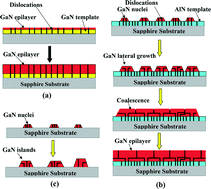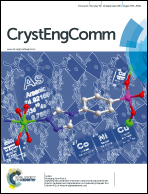Stress-induced in situ epitaxial lateral overgrowth of high-quality GaN
Abstract
We proposed a method, i.e., stress-induced in situ epitaxial lateral overgrowth (ELO), for growing high-quality GaN heteroepilayers, and demonstrated its feasibility using both theory and experiment. Theoretical analysis by finite element simulation indicated that at a proper lattice mismatch, GaN islands formed during initial growth, continued to grow up to a stable state and finally coalesced into a film. To evaluate the effectiveness of the theoretical analysis, GaN films were grown on AlN/sapphire and GaN/sapphire templates. The experimental results showed that the stress at the interface between AlN and GaN initially caused separate GaN islands to form; subsequently, new islands stopped growing, and the islands displayed lateral growth until they coalesced into a film; however, GaN grown on GaN/sapphire always showed layer-by-layer growth, from the initial stage through to the final stage of growth. Therefore, the experimental results are consistent with the theoretical analysis, and stress-induced in situ ELO is a promising method for growing high-quality GaN films on suitable lattice-mismatched substrates, which is effective not only for growing GaN, but also for other lattice-mismatched epitaxial growth.


 Please wait while we load your content...
Please wait while we load your content...